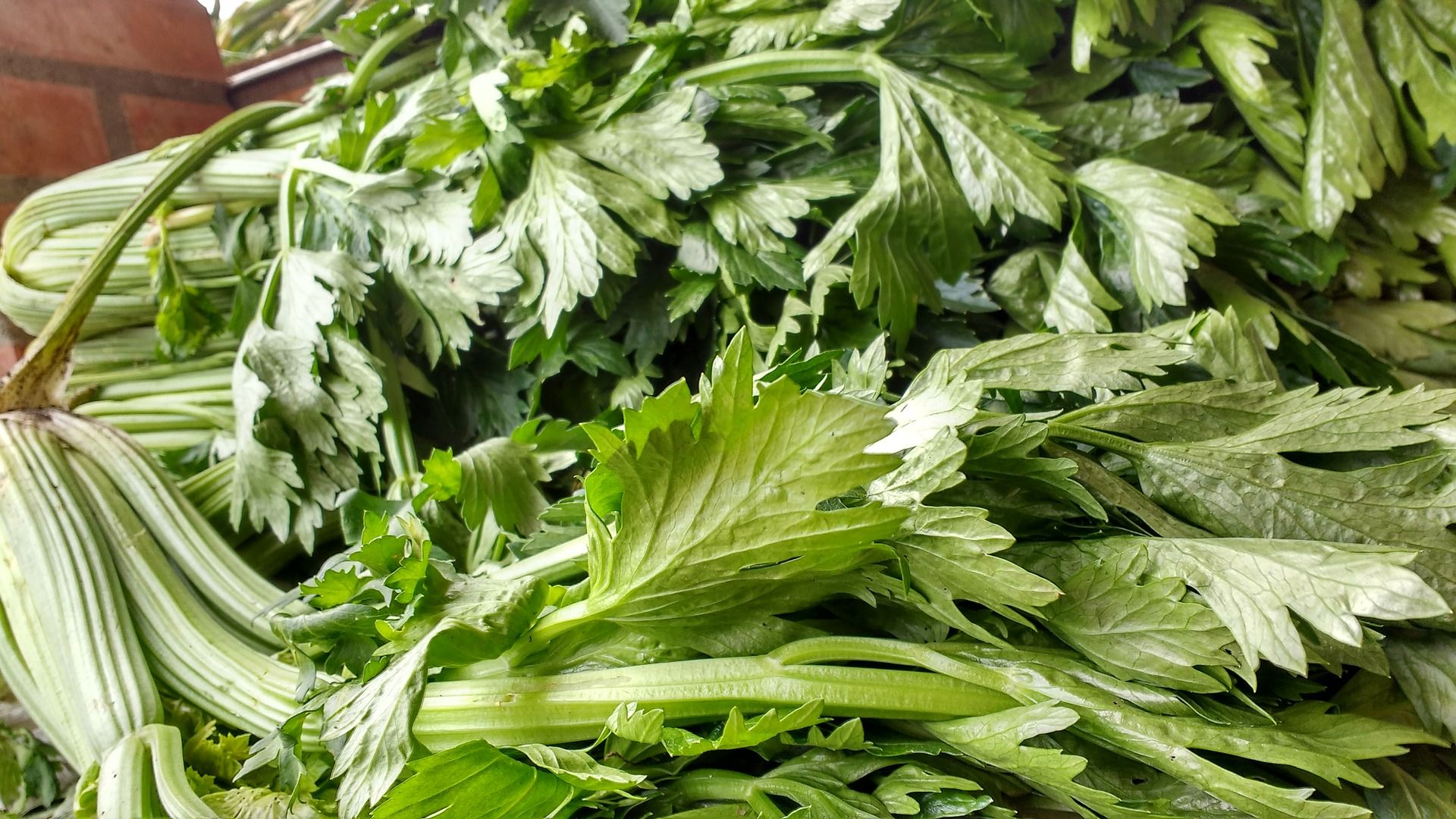Crisp and succulent, celery is wonderful eaten both cooked and raw. It ranges in colour from white to green and the deeper the hue, the stronger the flavour.
More appealing
“Authentic” English celery is much greener and leafier than pale “forced celery” from abroad – and so more flavourful. Some people are put off celery because of its tough strings, but they’re very easy to remove with a vegetable peeler.
Slow food
At the farm
we grow the traditional English celery, which takes much longer to grow than the pale imported variety we’ve gotten used to. We sowed ours in March and are only just harvesting it now. It requires fertile, moisture-rich soil. We use green manures and crop rotation to keep our soil in tip-top condition. We’ve planted 1,200 outside and a further 600 are about to be planted
in our polytunnel. Pick of the bunch
Different parts of the celery lend themselves to different dishes. Use the tougher outer stalks cook with. The inner, more tender, stalks are better for eating raw in a salad or with a dip. The leaves are lovely used in salads or as a garnish.
Take stock
Celery is naturally high in sodium so tastes salty; it’s essential in vegetable stocks and using it in cooking means you don’t need to add as much seasoning. Make stock and then freeze, to use later in dishes such as risottos or soups. You can refrigerate raw celery for up to a fortnight. It tends to absorb the odours of other foods though, so keep it in a sealed container.

